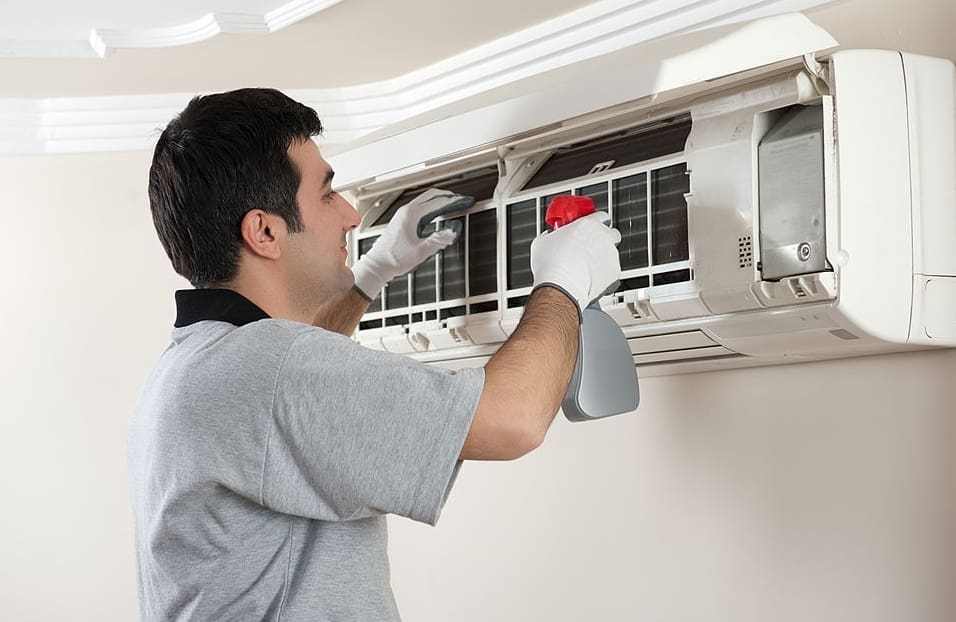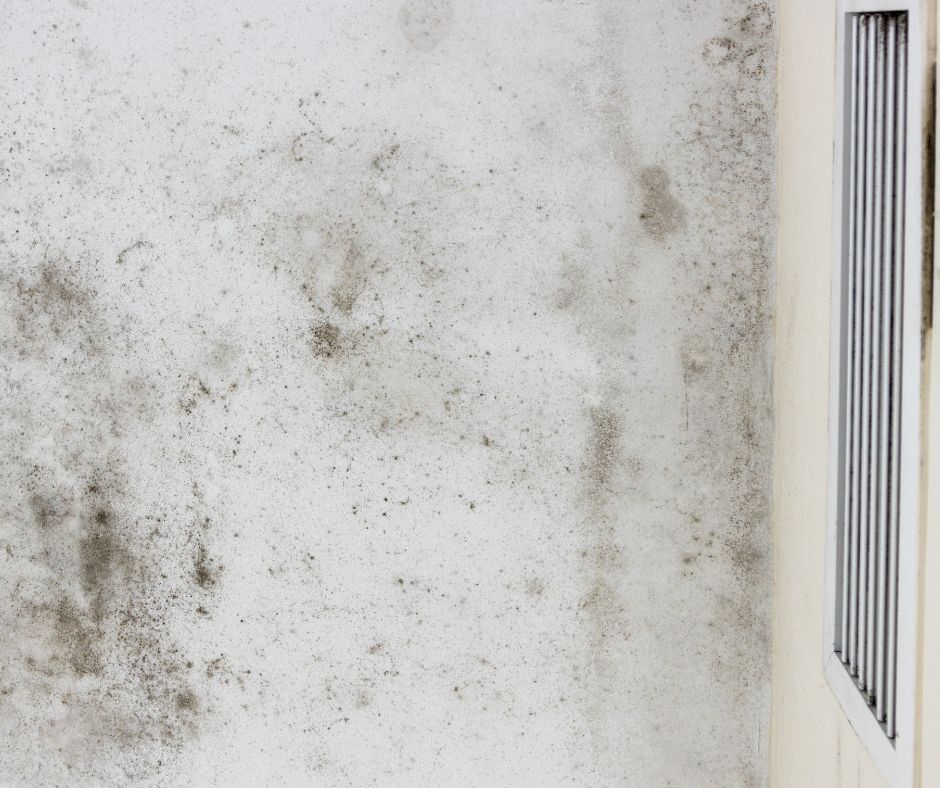Does your home have a slightly musty odor? Are your allergies flaring up more than usual? If so, it might be a sign of mould growth in your air conditioning system. Mould in air conditioners is a prevalent issue across Queensland, where the combination of high humidity and warm summers creates an ideal environment for mould proliferation. This situation can be a significant concern for homeowners, as mould not only affects air quality but can also lead to a host of health problems. It’s crucial to address mould issues promptly, as the presence of mould in your air conditioning system can lead to further complications for your household.

Understanding the Impact of Mould in Air Conditioners
Mould thrives in dark, damp environments, making air conditioners a prime location for its growth. The design of these systems allows for moisture accumulation, which is ideal for mould to flourish. When your air conditioning system operates, it circulates air throughout your home, inadvertently spreading microscopic mould spores into your living space. This not only compromises your indoor air quality but also poses serious health risks, including respiratory issues and allergic reactions. Therefore, it is essential to take preventive measures to stop mould from developing in your air conditioning unit and to ensure its removal if it is detected.
Identifying Signs of Mould in Your Air Conditioning System
If you have concerns about mould in your air conditioner, you should be vigilant for several tell-tale signs:
- Musty odour: A distinct musty smell is often the first indication of mould presence. If you have a central air conditioning system, you might notice this unpleasant scent lingering in your home, particularly in rooms with window units. A musty odor emanating from the vents when the air conditioning is operational is a strong indicator that mould is present in your system.
- Health symptoms when using the air conditioner: Mould exposure can trigger a range of health issues, such as allergic reactions and respiratory ailments. If you or a family member experiences these symptoms exclusively when the air conditioning is running, it could be an indication of mould contamination.
- Visible signs: Conducting a visual inspection of your air conditioner and its vents can reveal mould growth. Look for familiar blotchy mould spots, which may appear fuzzy and can be black or green-black. However, it’s important to remember that mould spores are often microscopic, meaning that even if you cannot see any visible mould, it still may be present within your system.
- Professional Inspection: If you suspect mould contamination in your air conditioning unit, it’s wise to seek the expertise of a professional mould inspector. They can assess whether mould exists in your air conditioner, ventilation system, and other areas of your home.
Understanding the Causes of Mould in Air Conditioning Systems
Mould is a type of fungus that requires three critical elements to thrive: oxygen, moisture, and organic matter. Given that air conditioners circulate air and often develop condensation on their cooling coils, the first two requirements for mould growth are frequently met. Furthermore, air conditioning units and their ventilation ducts create dark, enclosed spaces that are conducive to mould growth. With the addition of organic materials like dust and debris, the perfect conditions for mould development are created. Maintaining a routine of regular cleaning can significantly reduce the likelihood of mould accumulation in your air conditioner.
Types of Air Conditioners Vulnerable to Mould Growth
Many households utilize various types of air conditioning systems, including:
- Window air conditioners
- Freestanding, portable air conditioners
- Wall-mounted split systems
- Central ducted air conditioning
While any air conditioning system can be susceptible to mould, each type presents unique challenges in terms of detection and remediation.
- Mould in window air conditioners: Window-mounted air conditioning units are typically easier to inspect and clean. Depending on your comfort level and expertise, you might attempt to address any mould issues yourself. However, remember to prioritize safety and use appropriate protective gear when handling mould.
- Mould in freestanding air conditioners: Freestanding units are gaining popularity due to their convenience. Similar to window models, they often vent air and moisture through a window. Because they are designed for easy transport, you may be able to manage a mouldy unit independently, but caution is advised if you suspect contamination.
- Mould in split systems: These systems are directly installed into walls and typically service only one room without connecting to the home’s ductwork. This design can complicate inspections and mould cleaning efforts. Nevertheless, split systems can be more challenging to deal with than window or portable units due to their permanent installation status.
- Mould in ducted air conditioners: Central air conditioning systems present a more significant challenge when mould is suspected. They are larger and often situated in hard-to-reach areas. Additionally, because they are connected to a ventilation system, mould can spread more easily. Replacing a central air system is often impractical, so professional intervention is advisable to effectively manage a mould infestation. For severe cases, we recommend reaching out to The Mould Removers.

Common Types of Mould Found in Air Conditioning Systems
There are thousands of mould species, but the most commonly found in air conditioning systems include:
- Aspergillus: This genus of mould can provoke allergic reactions and health issues, particularly in individuals with compromised immune systems.
- Cladosporium: A prevalent mould type that appears green to black, Cladosporium is generally considered less harmful but can still trigger allergic responses and worsen asthma symptoms.
- Stachybotrys chartarum: Known as black mould or toxic mould, Stachybotrys chartarum is a particularly hazardous species that produces harmful mycotoxins.
The Risks of Black Mould in Air Conditioning Units
While many mould types can trigger allergic reactions and respiratory distress, black mould poses an especially serious threat in air conditioning systems. This type of mould releases mycotoxins that are harmful to human health. As your air conditioning unit circulates air, it can spread black mould spores throughout your home, allowing them to settle in various locations, such as walls, ceilings, and carpets. Given the potential health hazards associated with black mould, it is imperative to promptly identify and eradicate any infestations that may occur within your air conditioning system.

Proactive Strategies for Preventing Mould Growth in Air Conditioners
The good news is that there are several effective strategies you can implement to prevent mould growth in your air conditioning system:
- Reduce humidity: One of the simplest ways to minimize moisture accumulation in your air conditioner starts at the time of purchase. Opt for an air conditioning unit that effectively manages humidity levels. Many modern units expel excess water vapor into the atmosphere. If your model collects water in a reservoir, be diligent about emptying it regularly. This article provides more insights on managing humidity.
- Avoid organic debris: Mould requires organic matter to thrive, alongside moisture and air. To combat this, clean or replace your air conditioner filter frequently, and vacuum the interior of the unit to eliminate dust and debris. By removing potential food sources for mould, you can significantly reduce its chances of taking hold.
- Keep the unit running even during vacations: Mould flourishes when air conditioning units are turned off and the air becomes stagnant. Consider keeping your air conditioner operational even while you’re away on vacation. You can adjust the temperature settings to save energy, reducing how often the unit runs, but aim not to shut it down completely.
Our team of specialists is dedicated to eradicating fungus, mould, and mildew from air conditioning systems—harmful toxins that can jeopardize your family’s health. Our comprehensive air conditioner cleaning services guarantee that the air you breathe is clean and fresh, helping to prevent health problems associated with poorly maintained air conditioning units.
Contact us today to schedule your air conditioning cleaning!

